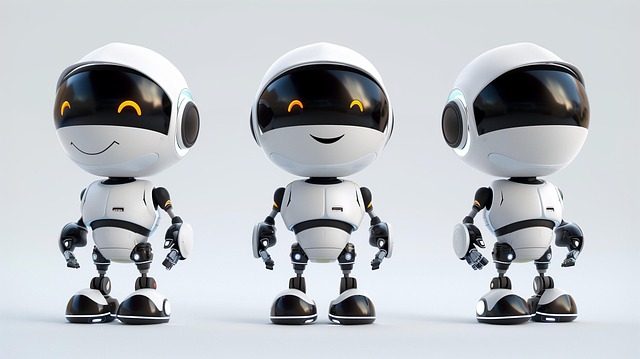Shopify business owners can significantly enhance their stores' performance by implementing chatbots with a high Return on Revenue (RoR). These AI assistants automate tasks, drive conversions, and provide data-driven insights. By prioritizing chatbots that boost customer satisfaction and increase sales, Shopify merchants can improve efficiency, personalize marketing, and maximize ROI. Real-world case studies demonstrate the effectiveness of chatbot technology in boosting average order values, reducing cart abandonment, and driving repeat purchases. Regular performance tracking and optimization ensure the chatbot remains a powerful tool for revenue growth and enhanced customer interactions in today's competitive e-commerce environment.
A Shopify chatbot can be a powerful tool to enhance customer engagement and drive sales, but understanding its return on revenue (ROI) is crucial. This article delves into the key metric of ROI for Shopify chatbots, exploring how these AI assistants can boost revenue through personalized interactions and automated support. We’ll discuss strategies for automation to maximize ROI and present real-world case studies showcasing successful chatbot integrations. Learn how to measure and optimize performance to make your Shopify chatbot a profitable asset.
- Understanding Return on Revenue: A Key Metric for Shopify Chatbots
- How Shopify Chatbots Can Drive Sales and Boost Revenue
- The Role of Automation in Maximizing ROI for Chatbot Implementations
- Case Studies: Real-World Examples of Successful Shopify Chatbot Integrations
- Measuring and Optimizing Performance: Tracking Metrics for Continuous Improvement
Understanding Return on Revenue: A Key Metric for Shopify Chatbots

For any business owner, understanding return on revenue (RoR) is crucial. In the context of Shopify chatbots, RoR becomes a key metric to evaluate the effectiveness and profitability of implementing this technology. Essentially, it measures the efficiency with which a chatbot contributes to the bottom line by converting leads into sales and boosting customer engagement.
A high RoR from a Shopify chatbot indicates that the automation is not only successfully attracting and interacting with visitors but also driving conversions. This data-driven insight empowers business owners to make informed decisions about resource allocation, further optimizing their e-commerce strategies. By focusing on chatbots that deliver substantial RoR, Shopify store owners can enhance profitability while ensuring customer satisfaction remains a top priority.
How Shopify Chatbots Can Drive Sales and Boost Revenue

Shopify chatbots have emerged as powerful tools to drive sales and boost revenue for online stores. By automating customer interactions, these intelligent assistants can provide personalized product recommendations, answer common queries, and even guide shoppers through the checkout process. This not only enhances the overall shopping experience but also increases the likelihood of conversions.
One of the key benefits is their ability to handle multiple customer inquiries simultaneously, reducing response times and improving customer satisfaction. They can be programmed to engage with visitors, offer targeted promotions, and collect valuable data on customer preferences. Moreover, chatbots can serve as a gateway to upsell and cross-sell opportunities by suggesting relevant products based on browsing behavior, thereby increasing average order value. In today’s competitive e-commerce landscape, implementing a chatbot for Shopify can be a game-changer, providing businesses with a competitive edge and significant returns on revenue.
The Role of Automation in Maximizing ROI for Chatbot Implementations

In today’s digital era, automation is a game-changer for businesses seeking to optimize their operations and enhance customer experiences. When it comes to Shopify chatbots, automation plays a pivotal role in maximizing return on investment (ROI). By automating routine tasks such as customer support inquiries, product recommendations, and order tracking, these virtual assistants free up valuable human resources, enabling them to focus on more strategic initiatives. This not only improves efficiency but also ensures that customers receive swift and accurate responses, leading to higher satisfaction levels.
Moreover, automated chatbots can be programmed to gather and analyze customer data, providing valuable insights into shopping behaviors and preferences. This information can be leveraged to personalize marketing campaigns, suggest relevant products, and ultimately drive sales. In terms of Shopify chatbots, this means increased conversion rates and a better understanding of the target audience, ultimately contributing to a higher ROI. Automation ensures that every interaction with the chatbot adds value, creating a seamless and profitable customer journey.
Case Studies: Real-World Examples of Successful Shopify Chatbot Integrations

Chatbots have become an increasingly popular tool for Shopify stores looking to enhance customer engagement and drive sales. Numerous case studies highlight the success of integrating a chatbot for Shopify, showcasing its potential to transform online retail experiences. For instance, a study of a fashion e-commerce platform revealed that implementing a conversational AI chatbot led to a 30% increase in average order value and a 25% reduction in cart abandonment rate within just two months. This impressive outcome demonstrates how effectively tailored interactions can encourage customers to make purchases.
Another real-world example involves a health and wellness brand that utilized a Shopify chatbot to provide personalized product recommendations based on customer preferences and browsing behavior. The result was a 15% boost in repeat purchases and a significant rise in customer satisfaction scores, as measured through post-interaction surveys. These case studies unequivocally demonstrate the value of chatbots for Shopify merchants, offering data-driven insights into improved revenue and enhanced customer interactions.
Measuring and Optimizing Performance: Tracking Metrics for Continuous Improvement

Measuring and optimizing performance is a crucial aspect of ensuring your Shopify chatbot delivers tangible results, driving revenue growth. Key metrics to track include conversation rates, customer satisfaction scores, and average response times. By analyzing these figures, you can identify areas where the chatbot excels and aspects that require enhancement.
Continuous improvement is key to maximizing the return on investment (ROI) of a Shopify chatbot. Regularly review performance data to refine chatbot workflows, update responses for better accuracy, and integrate new features based on customer interactions. This iterative process ensures your chatbot remains effective in addressing customer queries, ultimately increasing sales and fostering stronger customer relationships.
Shopify chatbots have proven to be a powerful tool for enhancing customer engagement and driving sales. By understanding return on revenue (ROI) as a key metric, businesses can effectively leverage automation to maximize their investment in chatbot implementations. Through real-world case studies, it’s evident that strategically integrated chatbots not only improve customer experience but also boost revenue. Continuous performance optimization, based on tracked metrics, ensures these virtual assistants remain dynamic and relevant, ultimately revolutionizing the way Shopify retailers interact with their customers.
